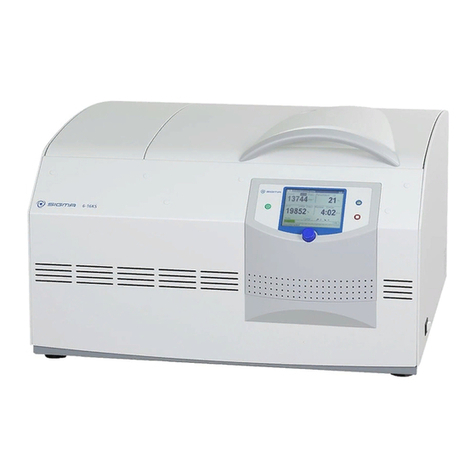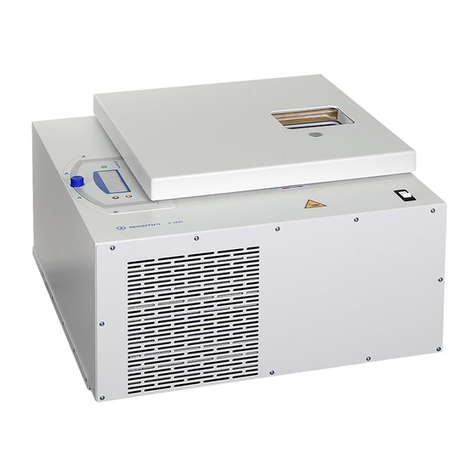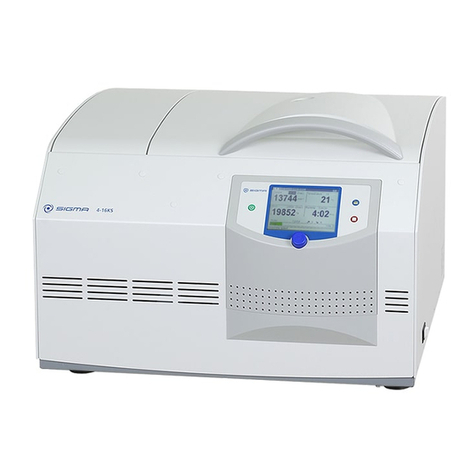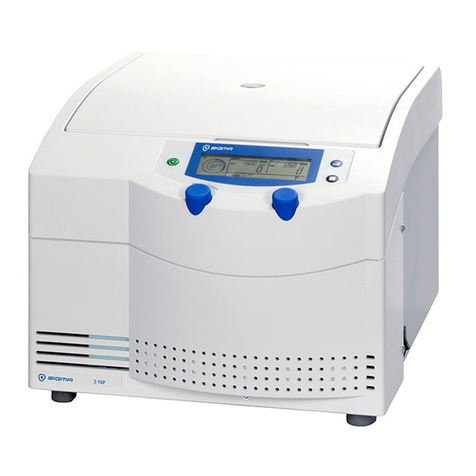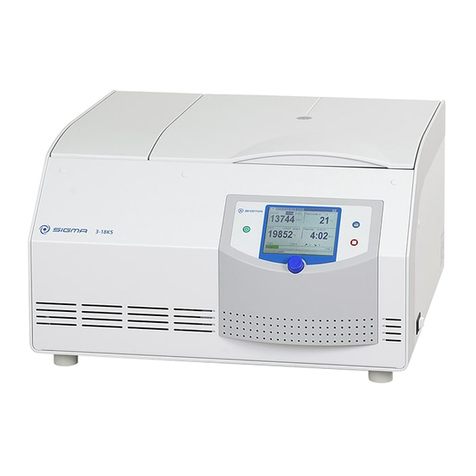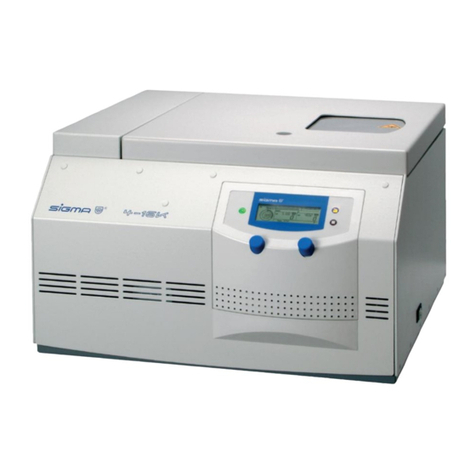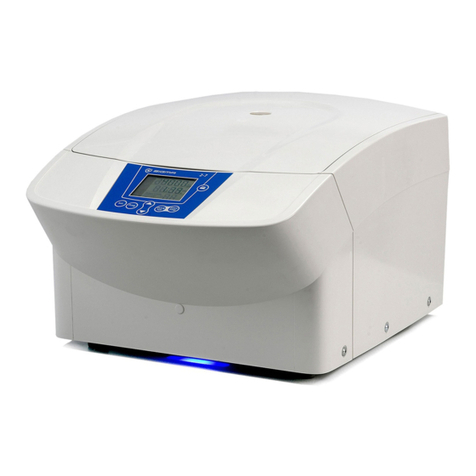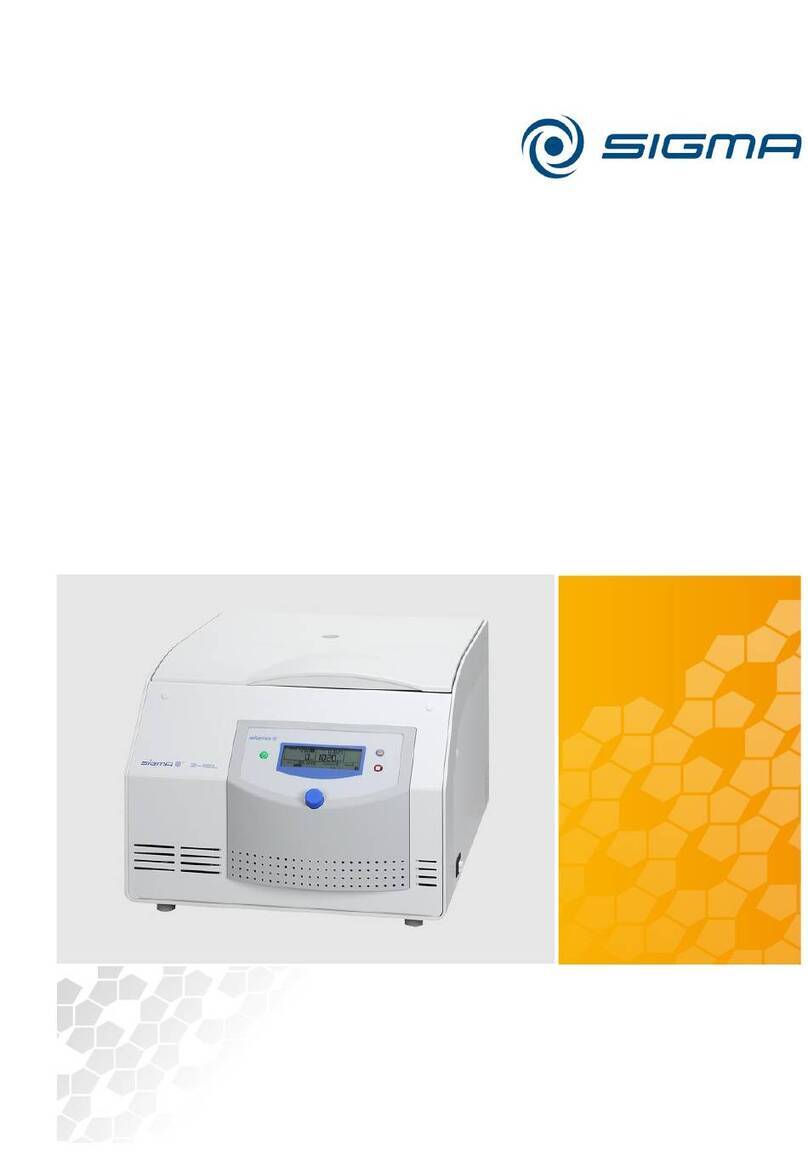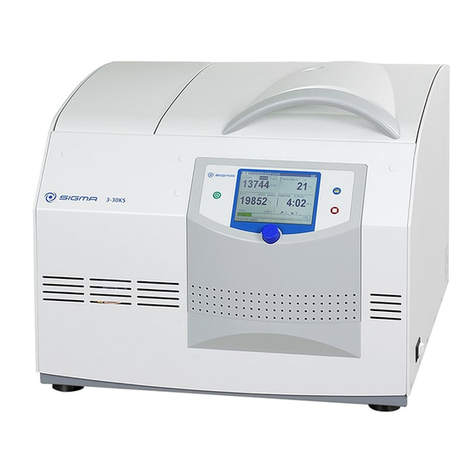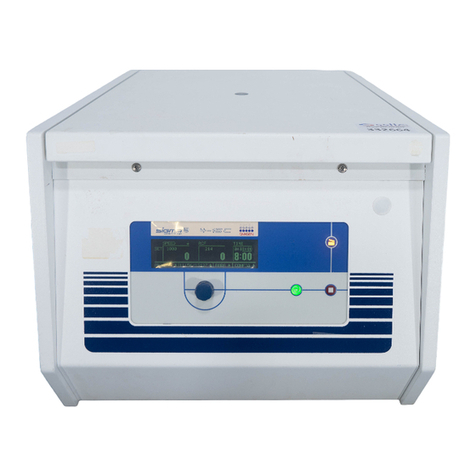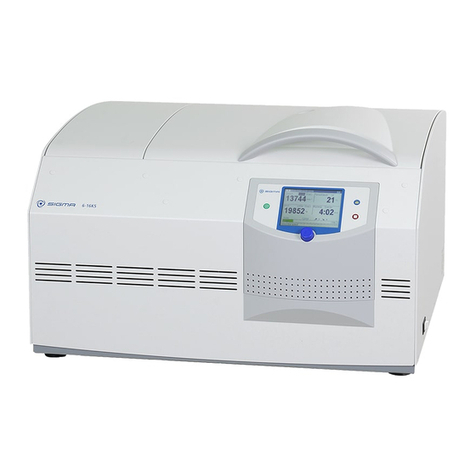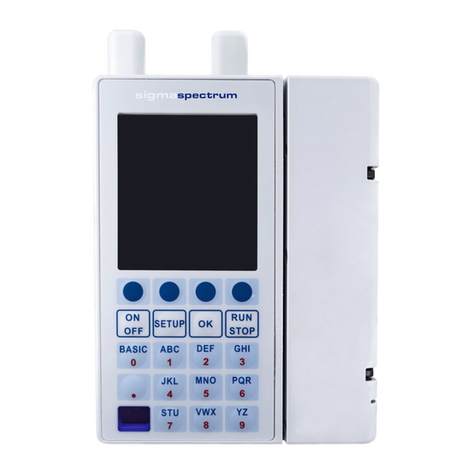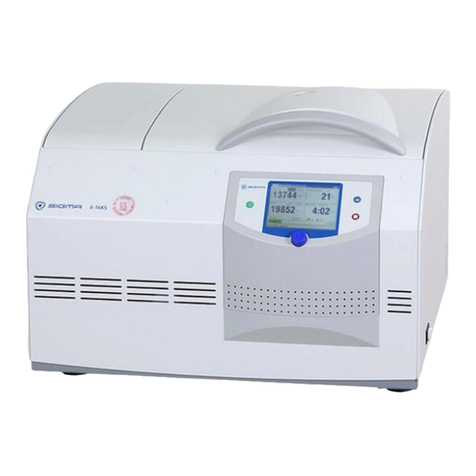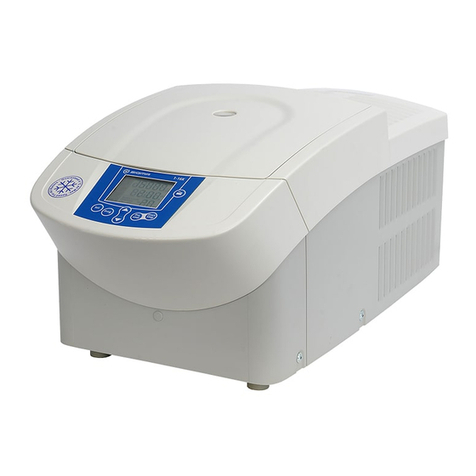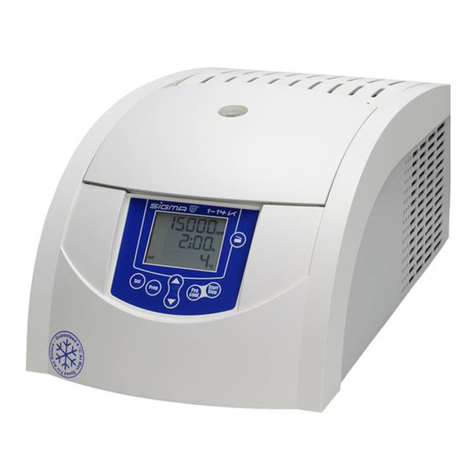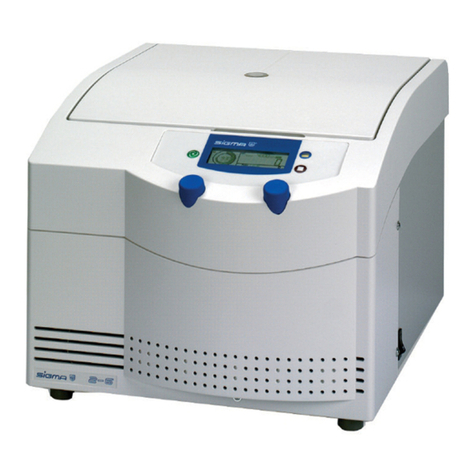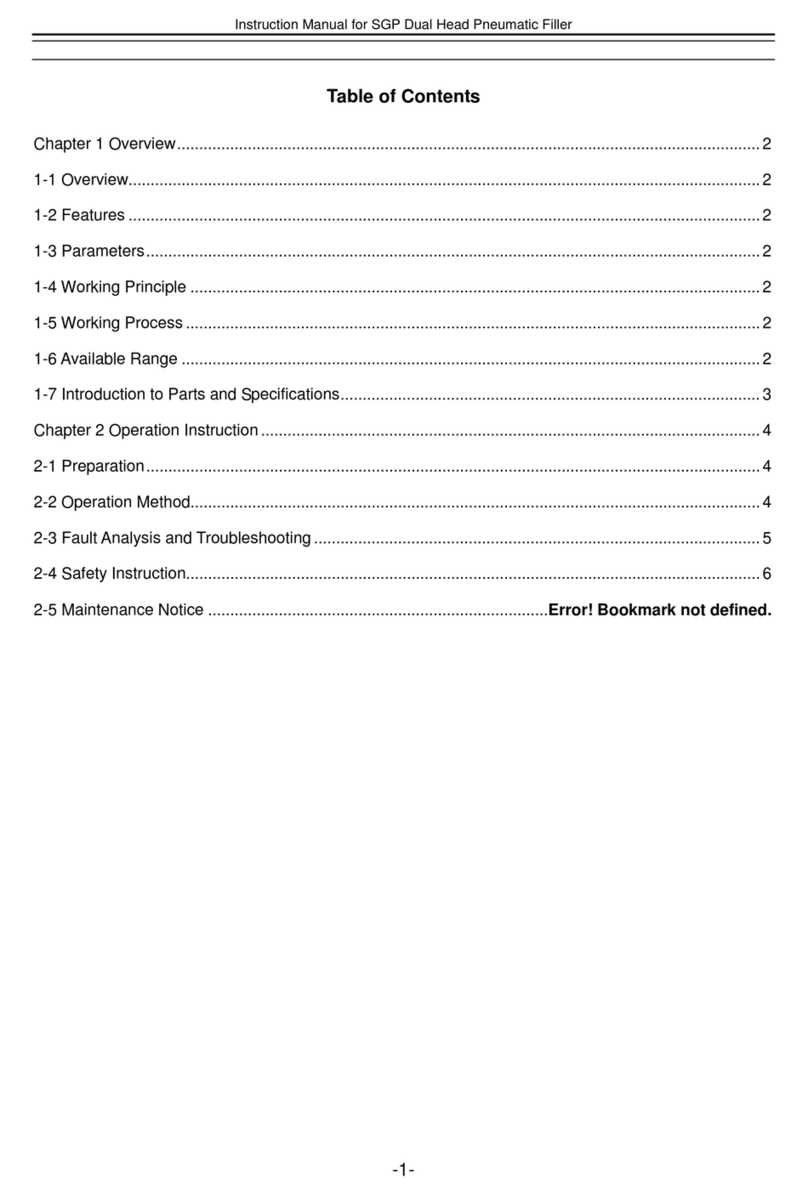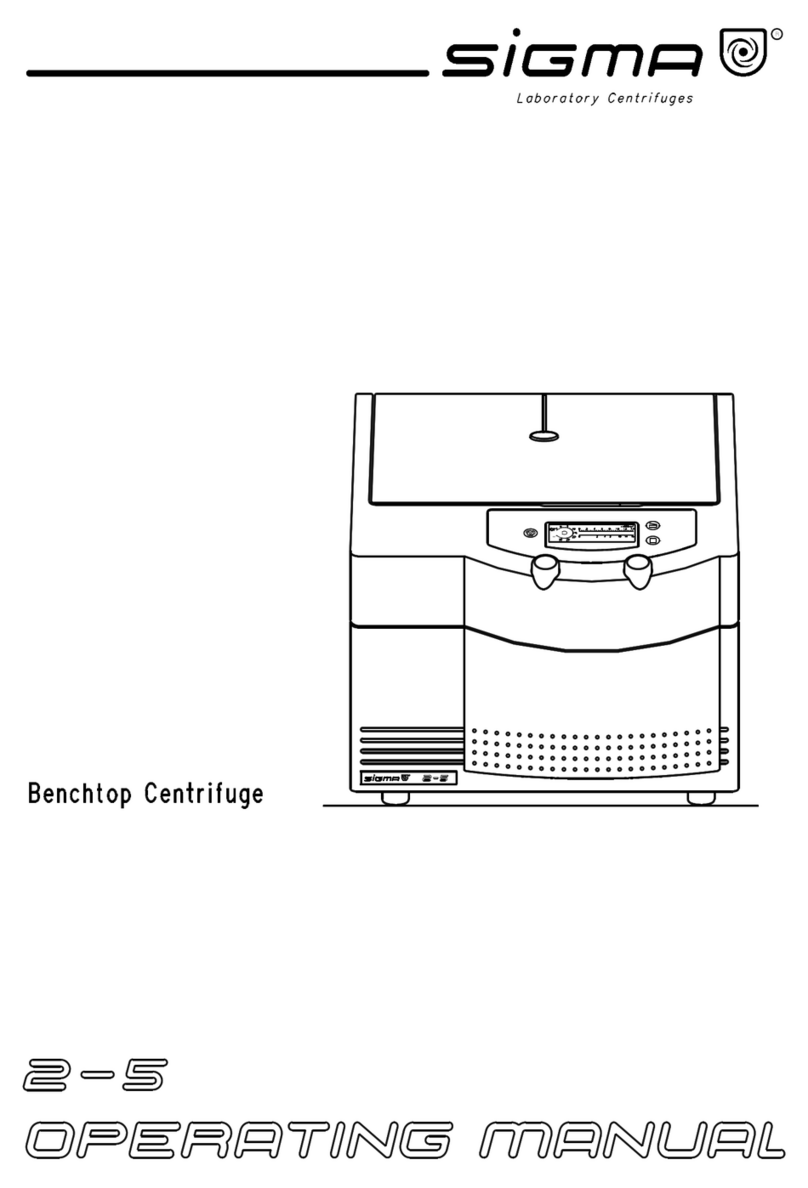
CONTROLLED COPY
Centre for Biological Engineering
Standard Operating Procedure SOP122
Title: Use and Maintenance of Sigma Refrigerated Centrifuge 3-16PK
Location: CBE Laboratory Unit (H21/22)
Version 003 Effective Date: 26th June 2018 Review 26th June 2020
Written by: Victoria Workman
Page 4 of 22
(v) Shall schedule servicing and preventative maintenance with authorized service representatives.
External maintenance and servicing of the equipment can only be performed after it has been
suitably disinfected (see SOP003) and a 'Decontamination Certificate' has been issued (a
proforma is available on the CBE website).
4. EQUIPMENT AND MATERIALS
1. Sigma 3-16PK refrigerated centrifuge: Ser. No. 137665.
2. Rotors: Swing-out rotor (Cat.-No. 11180), Plate rotor (Cat.-No. 11222).
3. Centrifuge tubes: Corning plug seal cap, sterile, polypropylene, non-pyrogenic, RCF:9400xg,
max 50mL (Fisher, CFT-643-021J).
4. 70% IMS for cleaning.
5. 2% Detergent solution (Neutracon).
5.PROCEDURE
5.1 Pre-run checks
NOTE: A record for the use of the centrifuge and the outcome of routine inspections MUST be
maintained. A safety inspection outlined below must be carried out before each use.
NOTE: Lifetime of the Rotor: After 10 years the rotors and accessories must be inspected by the
manufacturers. The rotor must be scrapped if it has done 50,000 cycles for reasons of safety.
CAUTION: Centrifuging can produce aerosols and therefore bio-hazardous material MUST NOT be
centrifuged in open containers. Sealed containers provide initial protection but should be reinforced by
the use of sealed buckets or rotors, which reduce the hazard if the container collapses.
Before each centrifuge run:
(i) Inspect all the all safety relevant parts of the centrifuge i.e. rotor and accessories (e.g. cover
seal, adapters and rotor tie down screw) for cleanliness and visible signs of damage, or wear,
abrasion or discolouration or wear e.g. cracks, nicks, chemical degradation, pitting or corrosion.
(ii) Inspect buckets and centrifuge tubes for visible signs of damage, malformation or wear (e.g.
cracks, nicks, chemical degradation, pitting or corrosion).
CAUTION: If any sign of visible damage or wear is detected, DO NOT USE the centrifuge.
Consult the Responsible Person and record the outcome of the inspection on the Preventative
Maintenance of centrifuges Record (Section 6), otherwise proceed as follows:
NOTE: Slight scratches and cracks can cause severe inner damage to the rotor materials,
which are difficult to detect with the eye. If in doubt, DO NOT USE the rotor.






